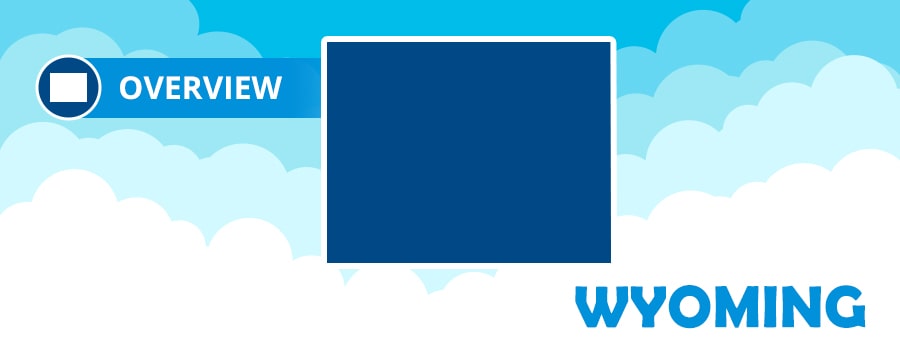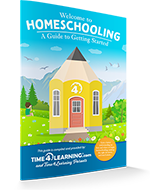Homeschooling In Wyoming
Welcome to homeschooling in Wyoming! Assuming responsibility for your children’s education is a big commitment. We understand. And, we want you to feel confident in your decision, so we’ve compiled all the information you need to know to get started on your journey. Read on to learn the steps required for homeschooling in Wyoming and the different groups of homeschoolers around the state.
- How to Start Homeschool in Wyoming
- Wyoming Homeschooling Laws
- Wyoming Homeschool Associations
- Wyoming Homeschool Groups and Co-ops
- Wyoming Homeschool Field Trips
- Wyoming Standardized Testing and Test Prep
- Why Time4Learning is the Leading Homeschool Curriculum in Wyoming
- How to Build the Best Homeschool Curriculum for PreK-12 in Wyoming
This information should by no means be interpreted as legal advice. It is your responsibility to interpret and understand the laws that you will be homeschooling under.
How to Start Homeschooling in Wyoming
Parents who wish to homeschool their children in Wyoming should:
- Submit a letter of intent to homeschool to your local school district.
- Choose your curriculum and submit a summary of all books and materials you plan to use for that academic year to the school board.
- Teach the required subjects
- Enjoy learning together!
Welcome to Homeschooling Guide
Download this FREE resource where experienced homeschoolers share their stories for how to begin homeschooling, understanding your child academically, planning your days, and much more.
Wyoming Homeschooling Laws
To legally homeschool in Wyoming, parents must meet the requirements of a basic academic educational program:
- Every year submit your curriculum to the school district
- Write up a summary of all your curriculum and materials and present it to your district’s school board.
- Instruction in these subjects is required: reading, writing, literature, mathematics, science, civics, and history.
Failure to submit curriculum can result in truancy issues. To learn more about these requirements visit our Wyoming Homeschooling Laws page.
Wyoming Homeschool Associations
Wyoming’s single statewide homeschooling association is Homeschoolers of Wyoming (HOW). HOW acts as both a support network and a guidebook for both new and veteran homeschooling parents. HOW alerts members to any challenges or changes in the state homeschool law, hosts an annual convention, and helps connect you with fellow homeschooling families in your area. Read more about this homeschool association on our Wyoming Homeschool Associations page.
Wyoming Homeschool Groups and Co-ops
When you’re homeschooling, every day is different. Questions and challenges are bound to pop up. And, who better to lean on than a fellow homeschooler. Homeschooling support groups and co-ops are great local resources. Members are eager to walk the walk with you, share their wisdom, and offer advice and tips. Read more about the various homeschooling support groups and co-ops in the state on our Wyoming Homeschool Groups and Co-ops page.
Wyoming Homeschool Field Trips
Field trips are a great way to help your students explore a place’s history and geography in depth. Wyoming’s diverse landscape and rich heritage offers many opportunities for hands-on learning and discovery. Learn more about the pioneers and Native Americans who once settled here at some of the many historic sites and interactive museums.
Discover fun and educational places in Wyoming on our Wyoming Homeschool Field Trips blog. Please make sure to contact each site before you plan your visit, as COVID-19 may have impacted their hours of operations.
Wyoming Standardized Testing and Test Prep
The WDE does not require annual testing or assessments. However, regular assessments can be beneficial. Regular evaluations can help parents pinpoint their child’s strengths and weaknesses. Parents can then adapt their homeschool program to fit their students’ changing needs.
Many traditionally schooled students also benefit from Time4Learning’s online afterschool program to improve their test scores and overall performance in school. Learn more on our Wyoming state test prep page.
Why Time4Learning is the Leading Homeschool Curriculum in Wyoming
Because Wyoming homeschool laws require parents to teach certain subjects and provide a certain level of academic education, an ideal curriculum will help parents meet these requirements.
Every year more homeschooling parents in Wyoming are choosing Time4Learning. Here’s why:
- Membership includes all core subjects (math, social studies, language arts and science). Plus, a variety of electives are available as well.
- The curriculum correlates to state standards.
- Encourages problem-solving skills, while developing independent learning skills.
- The self-paced lesson plans gives you the freedom to let your child work ahead or slow down as needed to master all essential concepts.
- Automated lesson planning, assessments, and recordkeeping so you can focus on teaching and mentoring your child.
- Available 24/7, allowing parents to set a schedule that works best for your family!
- Access to grade above and grade below for the same affordable price. This allows your student to review concepts they struggle with or jump ahead in subjects they’ve mastered.
- Parents can easily track student progress with our automated grading system and maintain records with our recordkeeping tool making it easy to through in a portfolio.
How to Build the Best Homeschool Curriculum for PreK-12
We understand how stressful it can be to find the right homeschool curriculum for your child, especially if you are new to homeschooling. It seems like there are endless options available. So how do you know which one is right for your child? How do you even find the time to research each one.
Being familiar with your child’s learning style is the first step in helping you make an informed decision when deciding on a curricula. Many parents also find that one program is usually not the answer, which is why many families end up using a variety of homeschool programs to create the best educational learning opportunity that best fits their child. Learn more about How to Build the Best Homeschool Curriculum for PreK-12.
Wyoming Unit Study Supplement
Help your homeschooler learn interesting history and geography facts about Wyoming in the Time4Learning unit study supplement.
Online Curriculum for Homeschool, Afterschool and Summer Use
In addition to being an award-winning choice for homeschool families, Time4Learning also offers an online after school program to help build your child’s skills. View our lesson demos and discover why thousands of families in Wyoming are already using it!
Give your student the chance to get back on track or explore exciting electives and get ahead for the next school year with Time4Learning’s online summer school. Our educational materials will engage and challenge your child to succeed.








